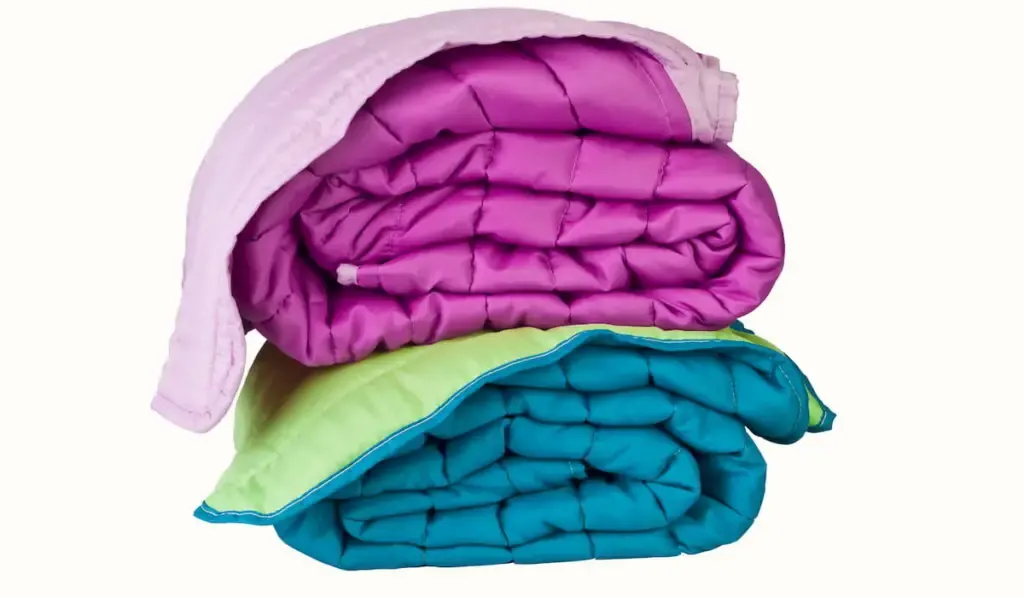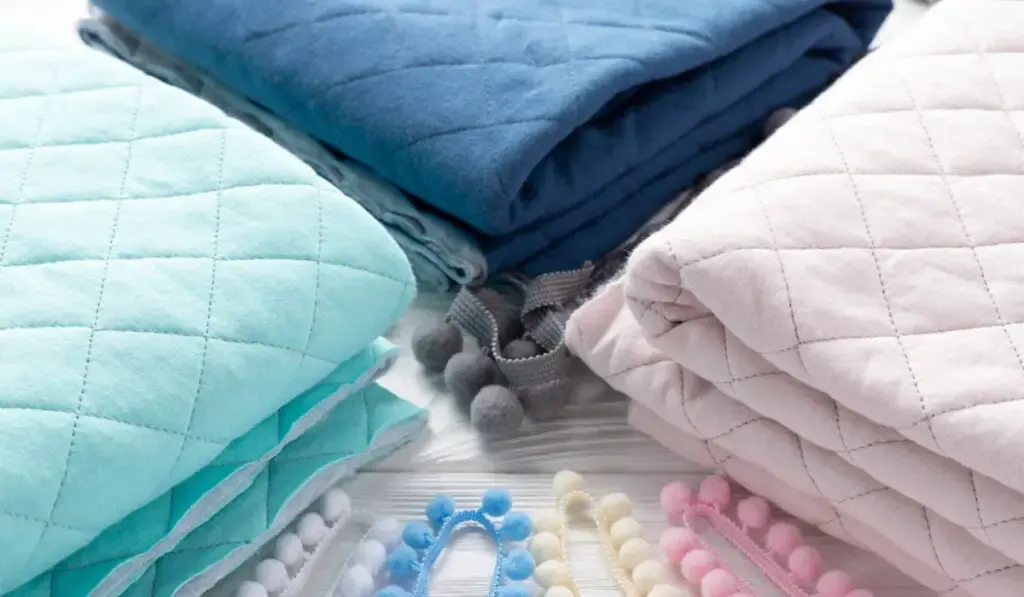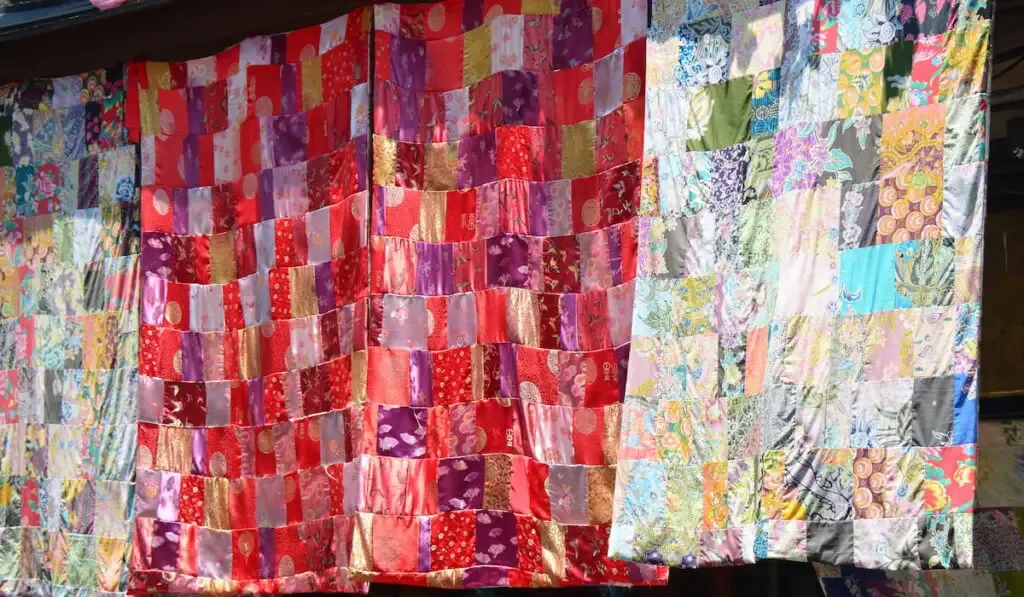The features of your quilt batting can have significant effects on your quilt outline. So, asking a question like, “does quilt batting have a grain?” might actually be the difference between a perfect quilt and a distorted quilt.
Does quilt batting have a grain?
Virtually all quilt battings have grain – they have a lengthwise grain and a crosswise grain.
While the crosswise grain of a quilt batting is stretchy, the lengthwise grain does not yield too much when stretched.
Aligning these grains correctly with the other quilt fabric layer grains is essential to getting your desired quilt outline.
For sure, no one wants a distorted quilt after putting in so much work to get the job done. So, to ensure your quilt comes out perfect, we discuss quilt batting grain and other things you should know about quilt batting. Read below for more.

Quilt Batting Grain Lines
Most, if not all, quilt battings have a grain line. Their grains are pretty much the same as those in regular fabrics in that they have both lengthwise and crosswise grains.
The lengthwise grain of quilt batting is not stretchy. Conversely, the crosswise grain is pretty stretchy. Without proper alignment, this combination of stretchy and non-stretchy grains can leave your quilt distorted.
So, what should you do? Align the non-stretchy grain of your batting with the non-stretchy grain of your quilt fabric layer. In other words, align the lengthwise grain of your batting with the lengthwise grain of the fabric layer.
The orientation described above is particularly vital when making wallhanging quilts. The least/non-stretchy grain of a wallhanging quilt must run from top to bottom (lengthwise).
Besides aligning the batting lengthwise grain with the lengthwise grain of the fabric layer, quilting the lengthwise grain first reduces the chances of distortion.
Other Batting Features That Can Affect the Look of Your Quilt
Loft
Basically, the loft of your batting is its thickness. Obviously, thicker batting will give a different look to your quilt than thinner batting.
Generally, with thinner/low-loft batting, the quilt lines will not be as defined as using thick batting.
However, you may get a better definition with polyester, wool, or cotton-polyester batting, even if they are low-loft.
Besides quilt line definition, the loft of your batting plays a part in balancing tension. It is easier to hide stitches in thicker batting than thinner ones.
So, when getting batting, ensure you opt for one that matches your finishing method. This way, you will get better results.
Thinner batting is relatively more fragile than a thicker one. It is also less expensive. But if it will not serve you as well as you want, opt for thicker batting.
The loft of your batting also plays a part in your quilt’s ability to drape. Generally, batting with higher loft has a lower ability to drape than those with lower loft. So, take this into consideration when getting batting for your quilting projects.
To make a low-loft batting even more drapable, quilt it densely. But if you want lower drapability, tie the quilt.

Resilience
A batting’s resilience is its ability to resist stretching and return to its original shape after you stretch it.
Polyester batting is your best bet for quilts to maintain their shape even after stretching. But besides having high resilience, polyester batting gives a puffy appearance. So, if you like a puffy pattern in your finished quilt, polyester batting might work well for you.
Unlike polyester batting, cotton batting creases readily. But then, cotton batting is more breathable than polyester batting. So, if you want resilience and breathability, try working with cotton-polyester batting.
Size
When getting batting for your quilt, it must be larger than the top layer of the quilt. The difference in size between the batting and quilt top makes for better stabilization while quilting. But beyond that, it offers the allowance you need to put on the quilting frame.
Your batting should be at least 3 to 4 inches longer than your quilt top on all 4 sides. In other words, your batting should be at least 6 to 8 inches longer and wider than your quilt top.
Shrinkage/Washability
More times than not, batting will shrink a bit after you wash the quilt. How much the batting shrinks typically depends on the batting material. Generally, wool and polyester batting resist shrinking to a high degree. On the other hand, cotton batting shrinks around 3 to 5%.
No matter the batting material type, manufacturers usually indicate the degree of shrinkage to expect after washing your batting on the label. But looking forward to more shrinking than the manufacturer states is prudent.
The shrinkage of the batting you opt for will depend on the quilt finish you want. If you want the puckered antique/shabby chic finish, cotton batting or any batting with significant shrinkage will work for you.
On the flip side, if you do not want your batting to shrink too much after washing, pre-wash it. You can also opt for low-shrinkage battings like polyester and wool batting.

Conclusion
Quilt battings have a lengthwise grain and a crosswise grain. To ensure quilt stability, the less stretchy/non-stretchy grain (the lengthwise grain) must align with the lengthwise grain of the quilt bottom.
You can make things even more stable by quilting the lengthwise grain first.
